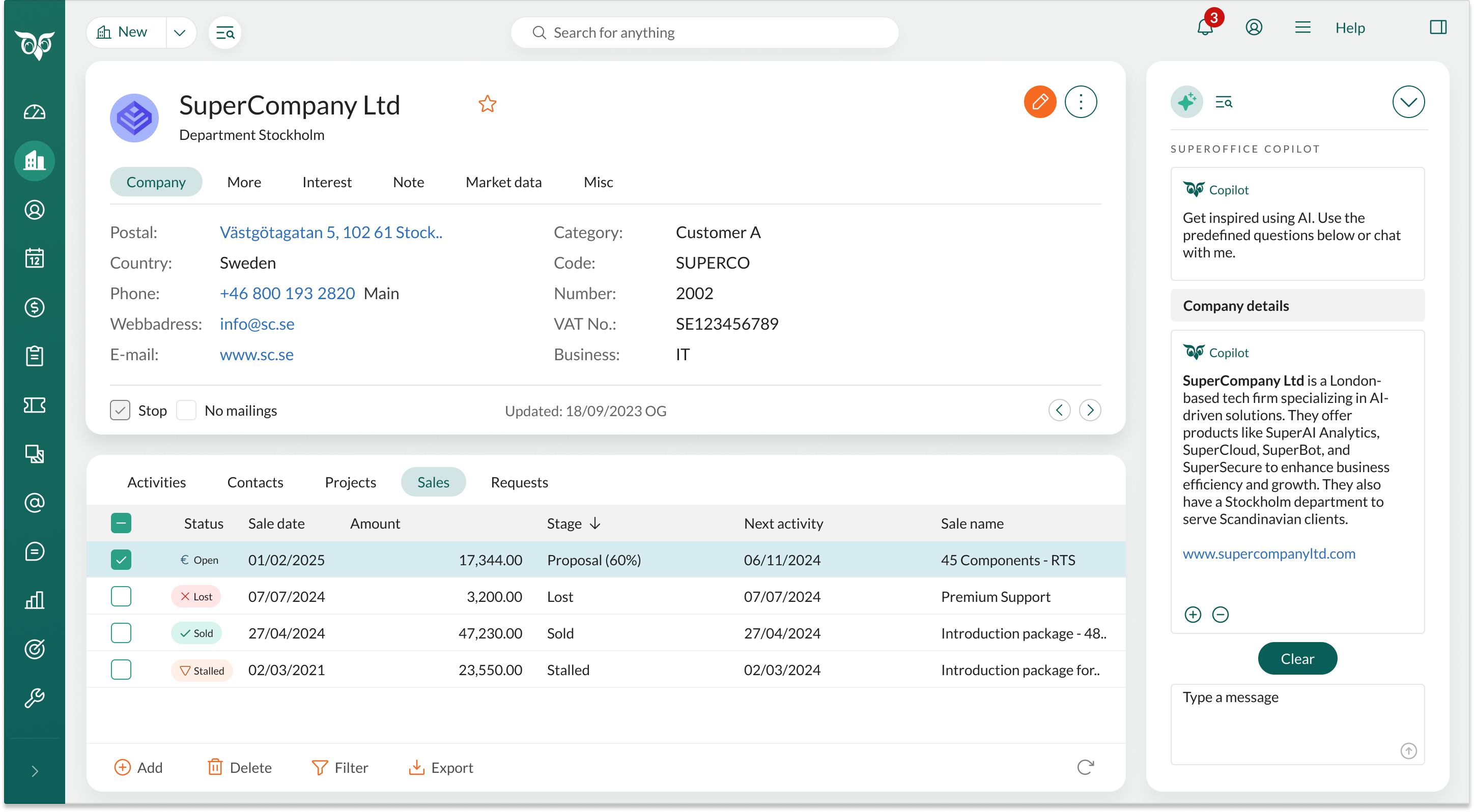Sales is a team effort, but without the right tools, collaboration can quickly break down.
When customer data is scattered, follow-ups get missed, and communication is inconsistent, deals slip through the cracks.
You need a system that keeps your entire team aligned, ensures seamless handoffs, and provides full visibility into your pipeline.
That’s exactly what a sales CRM does.
A CRM acts as the central hub for all sales activities, giving your team the tools to work smarter, share information effortlessly, and close deals faster.
In this article, you’ll discover how a CRM improves team collaboration in sales, helping your reps stay on the same page and work toward shared goals.
Why sales teams struggle without a CRM
Without a CRM, keeping everyone aligned can be an uphill battle.
Here are some common challenges that slow your team down:
- Scattered customer information – Reps store contact details, meeting notes, and deal history in different places, making it hard for teammates to access important insights.
- Missed follow-ups – If one rep reaches out to a prospect but doesn’t document it, another rep might unknowingly contact the same person, leading to confusion.
- No visibility into the pipeline – When you can’t see what stage each deal is in, it’s difficult to provide support or forecast revenue accurately.
- Sales and marketing misalignment – If marketing hands off leads without enough context, sales reps don’t know which prospects are ready to engage.
- Lack of a standardized process – Without a structured approach, every rep manages deals differently, leading to inconsistencies and lost opportunities.
A CRM eliminates these inefficiencies, ensuring that your entire sales team is working together toward the same goal - winning more deals.
6 Ways a CRM improves sales team collaboration
1. Keep everyone on the same page with centralized customer data
Your team needs instant access to accurate customer information to sell effectively.
When customer data is scattered across emails, spreadsheets, and personal notes, reps waste valuable time searching for key details - or worse, they miss critical information entirely.
A CRM centralizes all customer interactions, deal history, and contact details in one place, so your team can:
- Access up-to-date customer information anytime, anywhere.
- See full interaction history, including emails, calls, and meetings.
- Ensure smooth handoffs when transitioning accounts between reps.
If a sales rep is out of the office, another team member can jump in and continue the conversation seamlessly, picking up exactly where the previous rep left off.
Pro tip: Train your team to log every customer interaction in the CRM, ensuring no important details get lost.

2. Improve internal communication and reduce duplicate efforts
Miscommunication between sales reps leads to redundant outreach, missed opportunities, and a frustrating experience for prospects.
A CRM provides a shared workspace where team members can leave notes, assign tasks, and track conversations in real time.
- Avoid duplicate follow-ups by keeping track of all interactions.
- Assign leads and tasks to specific team members for accountability.
- Use team-wide notifications to stay updated on key deals.
For example, if one rep has already scheduled a demo with a prospect, another rep won’t waste time reaching out again - they can simply check the CRM and see the next steps.
Pro tip: Use CRM notifications to alert teammates when an important deal update occurs, so no one is left out of the loop.
3. Ensure smooth lead and deal handoffs
Without a structured process, leads can get lost between marketing and sales, or between different sales reps. A CRM eliminates this by automating lead assignments and tracking deal progression.
- Automatically assign leads to the right rep based on industry, location, or deal size.
- Track every stage of the sales process, ensuring leads don’t go cold.
- Provide full context when handing off deals between reps.
Instead of manually forwarding emails, marketing can pass qualified leads directly into the CRM, where sales reps can see how prospects engaged with content before reaching out.
Pro tip: Set up automated workflows to ensure that every new lead is followed up with promptly and assigned to the right rep.
4. Give sales managers full visibility into the pipeline
As a sales manager, you need to see what’s happening in your pipeline in real time to provide guidance and remove roadblocks.
A CRM gives you:
- Live dashboards to track deal progression and team performance.
- Insights into which deals need attention and which reps need support.
- Accurate sales forecasts based on real-time data.
If you notice multiple deals stalling at the negotiation stage, you can step in and coach your reps on handling objections more effectively.
Pro tip: Use CRM pipeline reports in your weekly sales meetings to review progress, identify challenges, and adjust strategies accordingly.

5. Align sales and marketing for a more effective sales process
When sales and marketing teams aren’t aligned, your reps end up with poor-quality leads or lack the information they need to close deals.
A CRM bridges this gap by:
- Providing visibility into marketing campaigns and lead activity.
- Scoring and prioritizing leads based on engagement levels.
- Tracking how leads move through the funnel, ensuring a smooth handoff.
For example, a sales rep can see that a lead attended a recent webinar or downloaded a case study - giving them valuable context before making a call.
Pro tip: Set up automated CRM notifications so that sales reps are alerted when leads take key actions, like opening an email or signing up for a demo.
6. Standardize sales workflows for consistency
When every rep follows a different process, it’s hard to track performance and optimize your approach. A CRM ensures consistent workflows and best practices across your team, helping you:
- Create structured sales playbooks that reps can follow.
- Set up automated task reminders to keep deals moving.
- Standardize follow-up sequences and proposal templates.
Instead of each rep writing their own follow-up emails, you can create CRM templates for outreach, proposals, and deal negotiations, ensuring messaging stays consistent.
Pro tip: Use CRM templates to save time, maintain brand consistency, and keep sales messaging aligned across the team.
Conclusion
A CRM is the backbone of a collaborative, high-performing sales team.
By centralizing information, streamlining communication, and providing full pipeline visibility, a CRM ensures that your reps stay aligned, work more efficiently, and close deals faster.
If you’re ready to improve team collaboration and sales performance, SuperOffice CRM is built to help your team succeed.
Talk to a CRM expert today and see how a sales CRM can improve the way your sales team works together.




